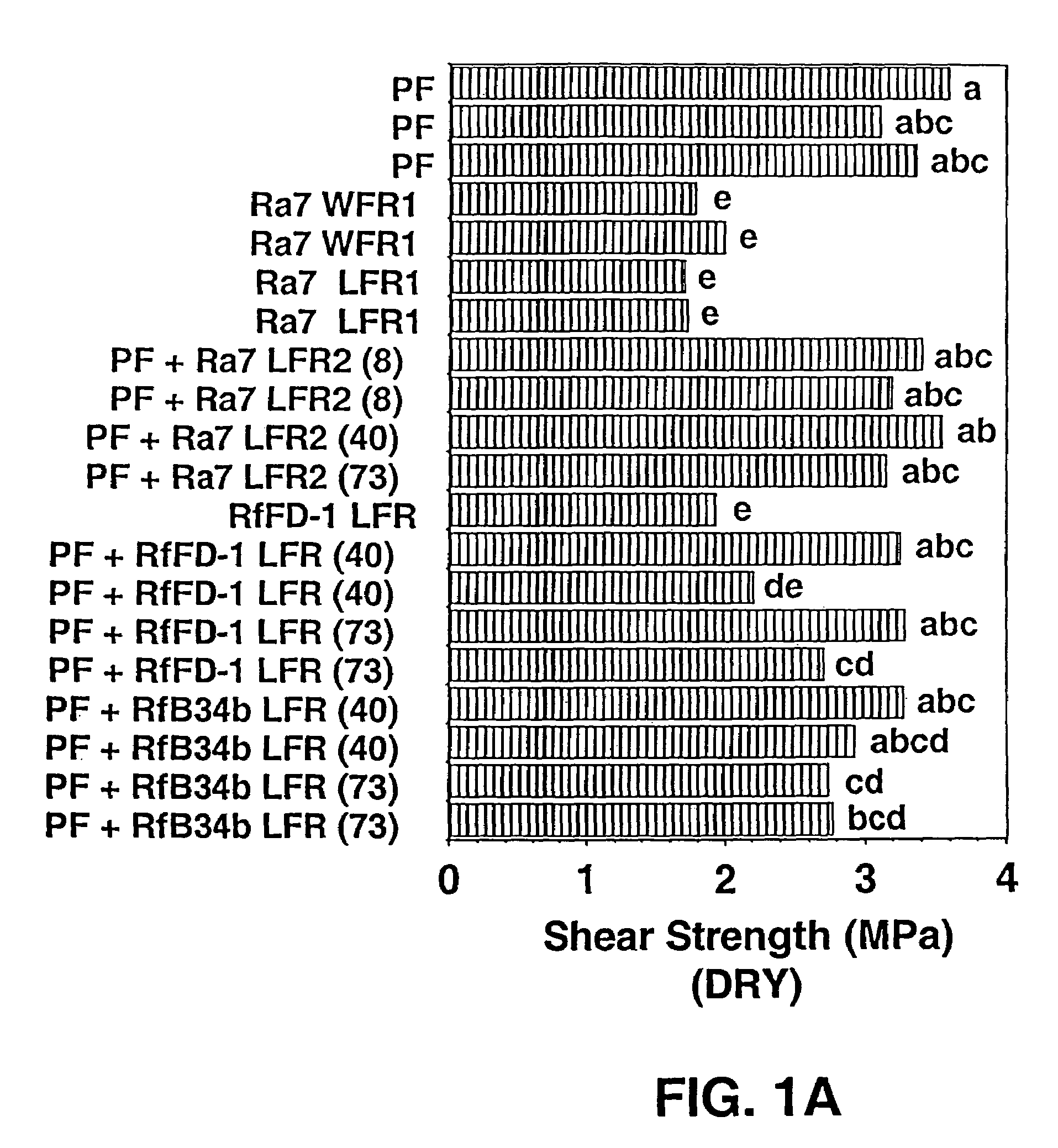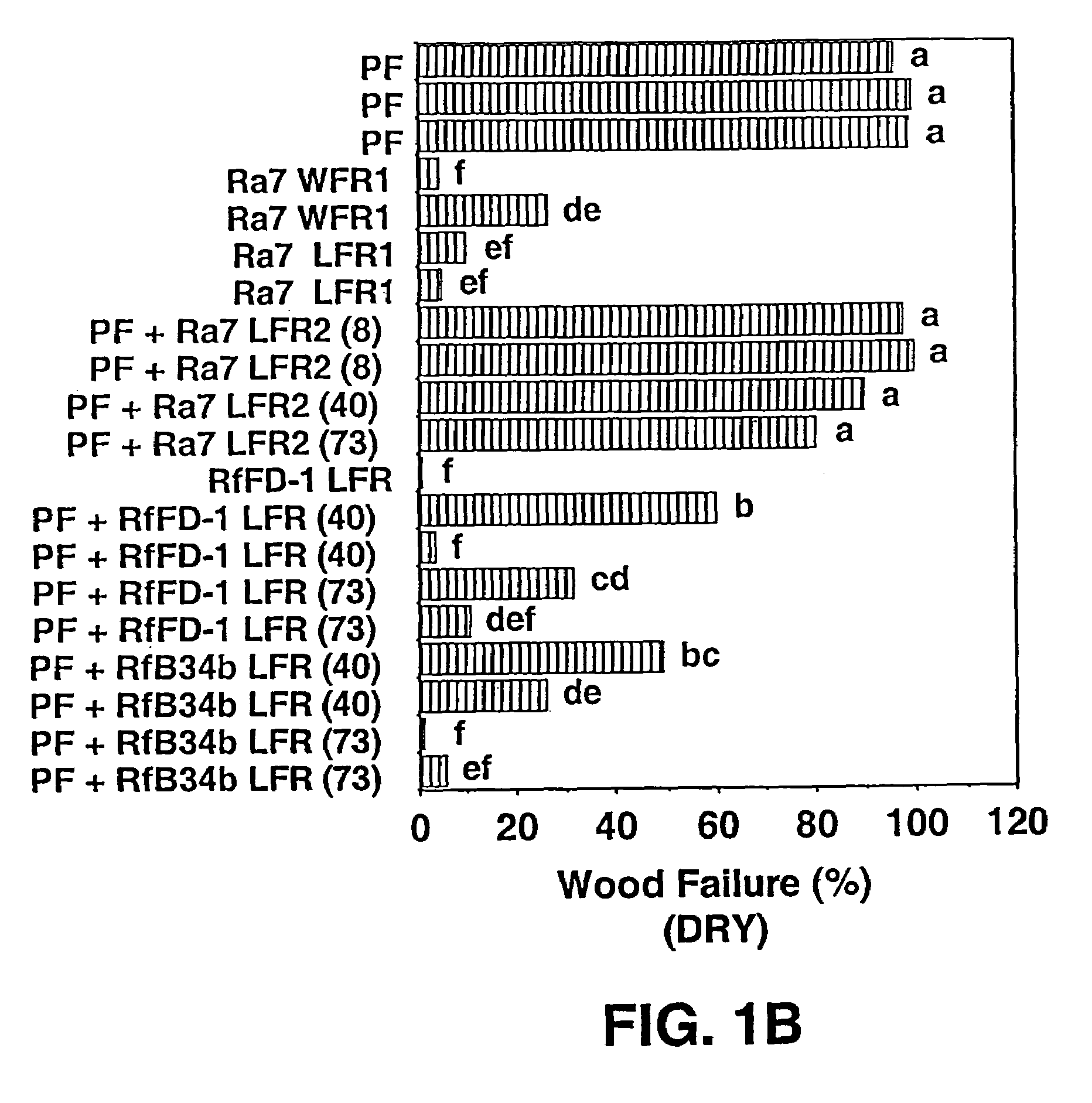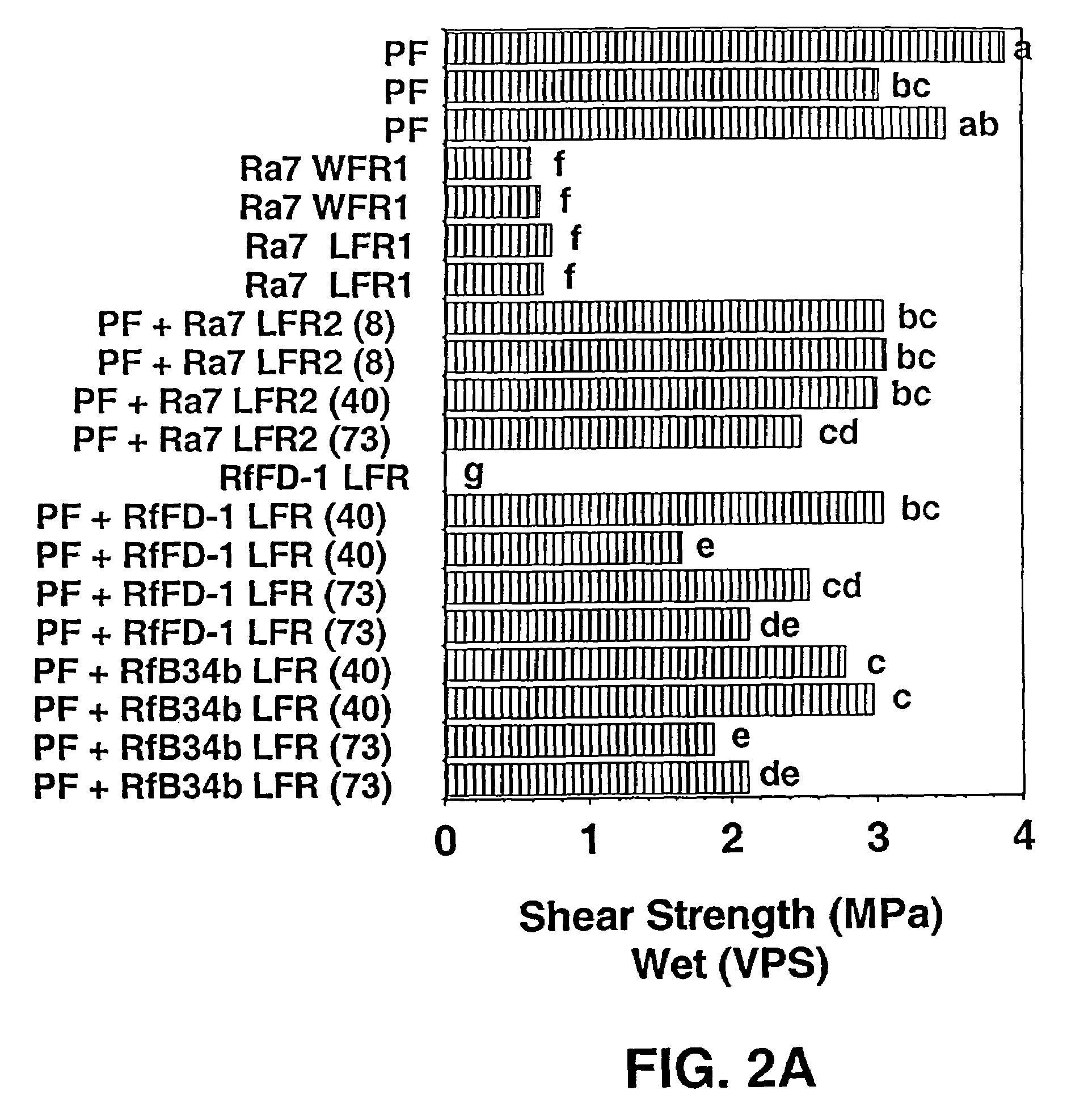Wood adhesives containing solid residues of biomass fermentations
a technology of solid residues and wood adhesives, which is applied in the direction of non-macromolecular adhesive additives, peptides, organic chemistry, etc., can solve the problems of high cost of enzymatic route, low inherent specific activity of fungal enzymes, and inability to economically viable processes
- Summary
- Abstract
- Description
- Claims
- Application Information
AI Technical Summary
Problems solved by technology
Method used
Image
Examples
example 1
Preparation of R. albus Fermentation Residues Containing Bioadhesive from Microcrystalline Cellulose
Preparation Procedure.
[0035]Ruminococcus albus (strain 7) and Ruminococcus flavefaciens (strains B34b and FD-1) were revived from 80° C. glycerol stocks, and were grown at 39° C. under a CO2 atmosphere. The medium was a modified Dehority medium (MDM), which contained the following (per liter): 0.9 g KH2PO4, 3.2 g Na2CO3, 0.90 g NaCl, 0.73 g NH4Cl, 0.085 g MgCl2.6H2O, 0.066 g CaCl2.2H2O, 0.028 g MnCl2.4H2O, 0.02 g FeSO4.7H2O, 0.01 g ZnCl2, 0.002 g CoCl2.6H2O, 0.002 g resazurin, 0.5 g yeast extract, 1.0 g cysteine HCl, 10 ml of Schaefer's vitamin mixture (Schaefer et al., J. Dairy Sci. 63:1248-1263, 1980, but amended with 0.125 mg of tetrahydrofolic acid per liter of vitamin mix) and 0.067 ml each of isobutyric, 2-methylbutyric, n-valeric and isovaleric acids. For R. albus 7, the medium was also amended with 25 μM of 3-phenylpropanoic acid (PPA, Morrison et al., Appl. Environ. Microbiol...
example 2
Adhesive Preparation
R. albus Fermentation Residue from Microcrystalline Cellulose
[0039]The following adhesive sources were used for the construction of plywood panels: phenol formaldehyde (PF, 42% solids; Neste Resins Corp., Springfield, Oreg.); wet fermentation residue (WFR) from R. albus 7 fermentation as prepared in Example 1 (33% solids in water, never dried); and lyophilized fermentation residue (LFR) from four separate Ruminococcus fermentations as prepared in Example 1 (each mixed with water to 33% solids). The adhesives were formulated according to Table 3. When mixing the LPR and PF together, the LFR was initially mixed with water until smooth, and then the PF was added and mixed well. PF, when used without fermentation residue, was supplemented with GLU-X (The Robertson Corporation, Brownstown, Ind.), a wheat-derived protein and starch product commonly used as a glue extender.
example 3
Plywood Panel Layup
R. albus Fermentation Residue from Microcrystalline Cellulose
[0040]Aspen veneer, 178×178×3 mm (7×7×⅛ inch) thick was conditioned to equilibrium moisture content at 27° C., 30% relative humidity (RH). Adhesive prepared as described in Example 2 was weighed onto veneers as required for the construction of three-ply panels and spread evenly across the veneer with a spatula. Veneer sheets were arranged in a cross-ply pattern (i.e., the wood grain in the middle sheet was oriented perpendicular to the grain of the outer sheets) and were pressed at 180° C. and 1.125 MPa (163 lb / in2). The adhesives used, singly or in combination, along with pressing times, are shown in Table 3.
PUM
 Login to View More
Login to View More Abstract
Description
Claims
Application Information
 Login to View More
Login to View More - R&D Engineer
- R&D Manager
- IP Professional
- Industry Leading Data Capabilities
- Powerful AI technology
- Patent DNA Extraction
Browse by: Latest US Patents, China's latest patents, Technical Efficacy Thesaurus, Application Domain, Technology Topic, Popular Technical Reports.
© 2024 PatSnap. All rights reserved.Legal|Privacy policy|Modern Slavery Act Transparency Statement|Sitemap|About US| Contact US: help@patsnap.com










